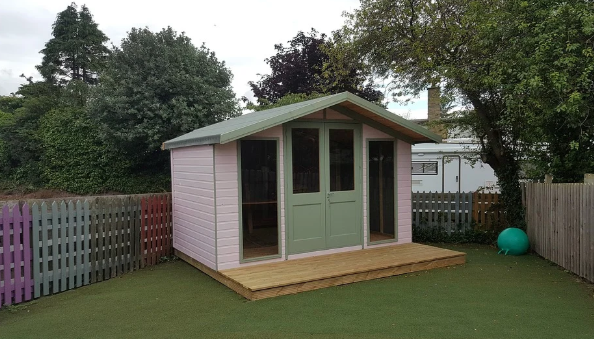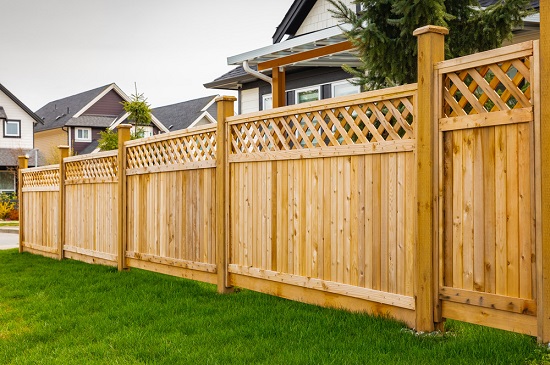You may have noticed wildflowers popping up more and more over the last few years, and with good reason. Sowing an area of wildflowers in the garden creates a charming look that is simple to achieve. UK native seed mixes are cheap to buy and once you’ve sown the seeds, you can sit back and admire the flowers without having to worry about pruning or other pesky maintenance tasks.
In the right conditions, wildflowers grow quickly and will return year after year, providing colour and pollen for months on end. A Gardeners Dream wildflower mix contains over 15 flower varieties that will grow a beautiful blooms in a selection of colours and heights.
If you’re sold on sowing a wildflower meadow but aren’t quite sure where to start, you’ll be pleased to learn that it is extremely simple to do. Read on for some tips and advice on how and where to plant your seed mix.
Can I Just Scatter Wildflower Seeds?
The short answer is yes – as long as you’ve prepared the soil in advance.
Wildflower seeds tend to germinate more successfully when they have access to sunlight so sprinkling them across the soil can work just fine. However, the more preparation you put into the soil (see below), the higher the chances of successful germination. We would always recommend you put slightly more effort in to maximise the rewards.
Can I Just Sow Wildflower Seeds on Grass?
The answer to this is a resounding ‘no’. You can incorporate wildflowers into your lawn but you’ll need to dig up parts of it and prepare the soil underneath. If you simply scatter the seeds on top of the grass then you’ll be disappointed. Wildflower seeds need good contact with the soil to germinate successfully so sowing onto a lawn covered in grass won’t be effective. Unless you have at least 50% bare soil in the area, planting wildflowers will be a waste of time and money.
Can I Sow Wildflowers in Pots?
Planting wildflowers in pots and containers is a great way to brighten up a patio or balcony and attract bees and butterflies to a small outdoor space. Make sure the container is clean before you start and be sure to drill drainage holes in the bottom if it doesn’t already have some. Remember your wildflowers will need to be watered every week (unless they’ve been drenched in rain) as the plants won’t be able to absorb moisture from the ground. Place the pot in a sunny spot, where the flowers will receive lots of natural sunlight.
How to Prepare the Soil and Plant the Seed Mix
Choose a sunny spot and wait for a day when the soil is just right – not too dry but not water-logged either. Lightly moist soil is perfect. Remove all weeds, clumps, stones and other debris from the area and work the soil until it is nice and fine. Dig out any vigorous perennial weeds, such as nettles and dandelions, to ensure you get the roots and they won’t grow back.
Wildflowers thrive in poor quality soil so don’t mix any compost or fertiliser into the ground. You might need to remove the top layer of top soil if your soil fertility is particularly rich.
Ideally, you should leave the ground for 4-6 weeks before planting wildflowers to give plenty time for any stubborn weeds to surface and be removed. It’s much easier to remove weeds before planting than after!
When the soil is ready, scatter the seeds evenly over the area. Use around 5g of seed mix per square metre. You may wish to mix light coloured carrier, such as silver sand or white flour, in with the seeds to make spreading them a bit easier. Rake a thin layer of soil over the seeds to protect them from birds and wind but be careful not to bury them too deep as they need sunlight for germination. If birds find the newly sown seeds too appealing, you might need to cover them with netting until they’re more established.
Finally, use a rose head watering can to gently water the seed mix into the ground. Be careful to use a weak flow of water, otherwise you’ll risk washing your newly sown seeds away.
Annuals vs Perennials
Wildflowers generally fall into two categories: annual and perennial. Annuals flower for one season before dying away. Perennial wildflowers will die back as the season comes to a close in late summer but will reappear the following year. Both varieties have their advantages.
Annuals
Annual wild flowers tend to be very colourful and grow quickly. They self seed so, if you have some bare soil around them, new flowers will grow the following year. Historically, annual meadows appeared in fields after ploughing, hence why they’re often referred to as ‘cornfield annuals’. Annual wildflowers benefit from soil that has some richness to it and are ideal for transforming beds and borders in the garden.
Annuals include:
- Yellow Rattle
- Poppies
- Cornflowers
Perennials
Perennial wildflowers will come back year after year, filling meadows with colour for a long period summer after summer. They do require a little annual maintenance in the form of cutting back at the end of the season. Perennials do well in poor soil types, where there isn’t much other vegetation to compete with them.
Perennials include:
- Buttercups
- Daisies
- Forget-Me-Nots
When Should I Plant Wildflower Seeds in the UK?
The ideal times for planting wildflower seeds in the UK is spring and autumn. Determine your soil type to find out which will work best for you.
Light Soils
Autumn sowing works well with lighter soils. Seeds sown in September usually germinate successfully and your new wildflower meadow will appear the following spring.
Heavy Soils
Heavier soils can become waterlogged and rot the seeds during winter so it is often best plant wildflowers in spring. Wait until the risk of late frost is low and aim to have the seeds sown by mid-April. Wildflowers generally take 10-12 weeks to flower after being sown so you should see some come up in the summer time.
Why Grow Wildflowers?
There are lots of reasons why you might want to grow wildflowers, ranging from environmental reasons through soil conditions to simply admiring the way they look.
Native Flowers
Native wildflowers are ones that grow naturally in woodland and countryside areas. They flourish in the local environment and have grown here for centuries. UK native wildflower seeds are perfect for this country as they are compatible with local conditions. Growing wildflowers that originate from the area benefits local wildlife.
Soil Condition
Wildflower seeds grow well in all soil types but are particularly well suited to poor soils. In fact, if your soil fertility is high, you may need to remove the top layer to reduce the quality before sowing your new meadow.
Wildlife
As well as providing a habitat for local wildlife, including birds and small mammals, wildflowers are irresistible to pollinators Bees, butterflies and other pollinating insects will flock to colourful wildflower blooms, which in turn helps meadows flourish for another year.
Wildflowers are easy to grow, pretty to look at and help local wildlife and pollinators along their way. They don’t require much maintenance and will pretty much look after themselves for most of the year.









